一、BMF 简介
BMF(Babit Multimedia Framework)是字节跳动开发的跨平台、多语言、可定制的多媒体处理框架。经过 4 年多的测试和改进,BMF 已经过量身定制,能够熟练地应对我们现实生产环境中的挑战。目前广泛应用于字节跳动的视频串流、直播转码、云剪辑和移动前/后处理场景。该框架每天处理超过 20 亿个视频。
官方仓库地址为:https://github.com/BabitMF/bmf?tab=readme-ov-file
二、BMF 初体验
2.1、安装方式
:one:、pip 安装首先要确保本机已经安装了 Python,然后使用pip install BabitMF安装 BabitMF,安装过程中其会帮你同时安装依赖包,显示 successfully 安装即为成功:
:two:、源码编译安装首先我们使用 git clone 命令克隆 BMF 源码git clone https://github.com/BabitMF/bmf bmf,克隆完成后,项目的文件结构如下:
使用重终端命令 cd 进入 bmf 项目目录,然后输入./build.sh开始构建,构建可能会持续 5 到 15 分钟:
2.2、初步体验
:one:、创建 Graph
import bmfgraph = bmf.graph()video = graph.decode({ "input_path": input_video_path //输入视频的本地目录地址})bmf.encode( video['video'], video['audio'], { "output_path": output_path,//输出视频的本地目录地址 "video_params": { "codec": "h264", "width": 320, "height": 240, "crf": 23, "preset": "very fast" }, "audio_params": { "codec": "aac", "bit_rate": 128000, "sample_rate": 44100, "channels": 2 } }).run()
复制代码
Graph 是 bmf 中最基础的一个概念,使用 graph.decode 和 encode 可以对视频进行解码和编码,这里首先使用 import bmf 导入模块,然后使用 graph = bmf.graph() 创建了一个 graph 对象,然后 video = graph.decode({"input_path": input_video_path}) 使用创建的图形对象对输入视频进行解码。解码后,video 对象包含了解码后的视频数据和相关信息。bmf.encode(...).run() 是对解码后的视频进行编码,其中视频参数包括:
"codec": "h264" - 视频编码器为 H.264。
"width": 320 - 视频宽度为 320 像素。
"height": 240 - 视频高度为 240 像素。
"crf": 23 - 视频质量控制参数,值越低质量越高。
音频参数包括:
"codec": "aac" - 音频编码器为 AAC。
"bit_rate": 128000 - 音频比特率为 128,000 bps。
"sample_rate": 44100 - 音频采样率为 44.1 kHz。
"channels": 2 - 音频通道数为 2(立体声)。"preset": "very fast" - 编码速度预设为"very fast"。
:two:、创建 Pipeline 同时,BMF 提供构建一个视频处理的 Pipeline,通过串联不同的同步模块来实现视频处理的流程:
构建同步模块:首先调用 bmf_sync.sync_module 接口创建四个 bmf 模块(c_ffmpeg_decoder、c_ffmpeg_filter(Scale)、c_ffmpeg_filter(volume)、c_ffmpeg_encoder)。然后,它不断循环地从输入视频中读取视频流,逐帧解码,并首先将其发送到缩放过滤模块,将视频缩放到 320x250 的分辨率。然后,获取处理后的视频帧,发送至音量过滤模块进行一次音量调节。最后,视频被发送到编码器模块进行视频编码并保存为文件。
构建管道:调用了 bmf_sync.process 接口,直接执行同步模块的处理过程,将输入数据包提供给模块进行处理,并返回处理后的结果和任务完成的时间戳。
管道循环:不断调用 bmf_sync.process 来处理视频和音频帧。使用 decoder 模块处理输入数据。得到 frames 字典,其中包含了不同通道的视频或音频帧。如果有下一帧需要处理,分别根据通道编号(0 或 1)判断是否有帧数据,然后使用 scale 或 volume 模块进行相应的处理,最后将处理后的帧数据传递给 encoder 模块继续处理。
其核心代码如下:
import bmffrom bmf import bmf_sync, Packetinput_video_path = "./big_bunny_10s_30fps.mp4"output_path = "./video.mp4"
def bmf.builder.bmf_sync.sync_module ( name, option, input_streams, output_streams )def bmf.builder.bmf_sync.process ( module, pkts_dict )
# create sync modulesdecoder = bmf_sync.sync_module("c_ffmpeg_decoder", {"input_path": input_video_path}, [], [0, 1])scale = bmf_sync.sync_module("c_ffmpeg_filter", { "name": "scale", "para": "320, 250"}, [0], [0])volume = bmf_sync.sync_module("c_ffmpeg_filter", { "name": "volume", "para": "volume=3"}, [0], [0])encoder = bmf_sync.sync_module("c_ffmpeg_encoder", { "output_path": output_path}, [0, 1], [])
while True: frames, _ = bmf_sync.process(decoder, None) has_next = False for key in frames: if len(frames[key]) > 0: has_next = True break if not has_next: bmf_sync.send_eof(encoder) break if 0 in frames.keys() and len(frames[0]) > 0: frames, _ = bmf_sync.process(scale, {0: frames[0]}) bmf_sync.process(encoder, {0: frames[0]}) if 1 in frames.keys() and len(frames[1]) > 0: frames, _ = bmf_sync.process(volume, {0: frames[1]}) bmf_sync.process(encoder, {1: frames[0]})
复制代码
2.3、老视频修复体验
熟悉了基础的 BMF 操作后,我们可以体验一下 BMF 修复老视频的 demo,官方为我们提供了一个写好的 colab 的 notebook:https://colab.research.google.com/github/BabitMF/bmf/blob/master/bmf/demo/colorization_python/deoldify_demo_colab.ipynb
点击进入链接,连接到 Colab 的资源,申请 T4 资源,申请成功后如下所示:
然后点击代码执行程序-全部运行:
运行流程首先会克隆老视频修复的 git 仓库,然后安装对应的依赖和工具:
其通过构建一个 BMF 模块,使用 DeOldify 算法对黑白视频进行颜色化处理。核心代码如下:
class py_deoldify_module(bmf.Module): def __init__(self, node, option=None): print(f'py_deoldify_module init ...') self.node_ = node self.option_ = option print(option) warnings.filterwarnings("ignore", category=UserWarning, message=".*?Your .*? set is empty.*?")
#NOTE: This must be the first call in order to work properly! #choices: CPU, GPU0...GPU7 device.set(device=DeviceId.GPU0)
if not torch.cuda.is_available(): print('warning: GPU is not available, the computation is going to be very slow...')
weight_path=Path('/content/DeOldify') if option and 'model_path' in option.keys(): model_path = option['model_path'] if not model_path: print(f'model_path={model_path}') weight_path=Path(model_path)
self.colorizer = get_stable_video_colorizer(weight_path) self.idx = 0
print(f'py_deoldify_module init successfully...')
def process(self, task): # iterate through all input queues to the module idx = self.idx
for (input_id, input_queue) in task.get_inputs().items(): # get output queue output_queue = task.get_outputs()[input_id]
while not input_queue.empty(): # get the earliest packet from queue packet = input_queue.get()
# handle EOF if packet.timestamp == Timestamp.EOF: output_queue.put(Packet.generate_eof_packet()) task.timestamp = Timestamp.DONE
# process packet if not empty if packet.timestamp != Timestamp.UNSET and packet.is_(VideoFrame):
vf = packet.get(VideoFrame) rgb = mp.PixelInfo(mp.kPF_RGB24) np_vf = vf.reformat(rgb).frame().plane(0).numpy()
# numpy to PIL image = Image.fromarray(np_vf.astype('uint8'), 'RGB')
colored_image = self.colorizer.colorize_single_frame_from_image(image)
if not colored_image: print(f'Fail to process the input image with idx = {idx}') continue
if debug: input_name = f'video/bmf_raw/frame_{idx}.png' print(f'input_name = {input_name}') image.save(input_name)
output_name = f'video/bmf_out/frame_{idx}.png' print(f'output_name = {output_name}') colored_image.save(output_name)
self.idx = idx + 1 out_frame_np = np.array(colored_image) rgb = mp.PixelInfo(mp.kPF_RGB24) frame = mp.Frame(mp.from_numpy(out_frame_np), rgb)
out_frame = VideoFrame(frame) out_frame.pts = vf.pts out_frame.time_base = vf.time_base
pkt = Packet(out_frame) pkt.timestamp = out_frame.pts
output_queue.put(pkt)
return ProcessResult.OK
复制代码
模型构建好之后,在 2-2 这里,可以修改相关的参数,其中:input_video_path 是输入视频路径,output_video_path 是输出彩色视频路径。model_weight_path 是在步骤 1-3 中下载模型权重的路径(仅体验的话不用管这个参数)。
等待片刻后,就能输出对应的老视频修复结果了:
三、BMF 体验总结
3.1、优点
通过以上实践体验,总的来讲,BMF 通过提供简洁易用的跨语言接口、灵活的调度和扩展性,以 graph/pipeline 的方式构建高性能的多媒体处理链路,以模块化的方式动态扩展、管理和复用视频处理,非常适合运用在视频转码、视频抽帧、视频增强、视频分析、视频插帧、视频编辑、视频会议、VR 等领域,其具有:
1、跨平台兼容性:BMF 广泛支持多个操作系统,包括 Linux、Windows 和 Mac OS,并且经过优化以适应 x86 和 ARM CPU 架构,确保在不同平台上的高效运行。
2、多语言支持:BMF 提供 Python、Go 和 C++ API,为开发人员提供了使用首选编程语言进行开发的灵活性,使项目更易于使用。
3、高效数据处理:BMF 提供了无缝的数据格式转换,涵盖了流行框架(FFmpeg/Numpy/PyTorch/OpenCV/TensorRT)。这包括硬件设备(CPU/GPU)之间的转换,以及色彩空间和像素格式的高效转换,为项目提供高度灵活性和效率。
3.2、缺点
1、ARM GPU 支持受限:官方暂不支持 ARM GPU 架构。2、文档较少:目前仅有官方文档和极少数论坛文章可供参考。3、社区活跃度不足:目前社区相对不够活跃,遇到问题时可能难以获得及时的帮助和反馈。
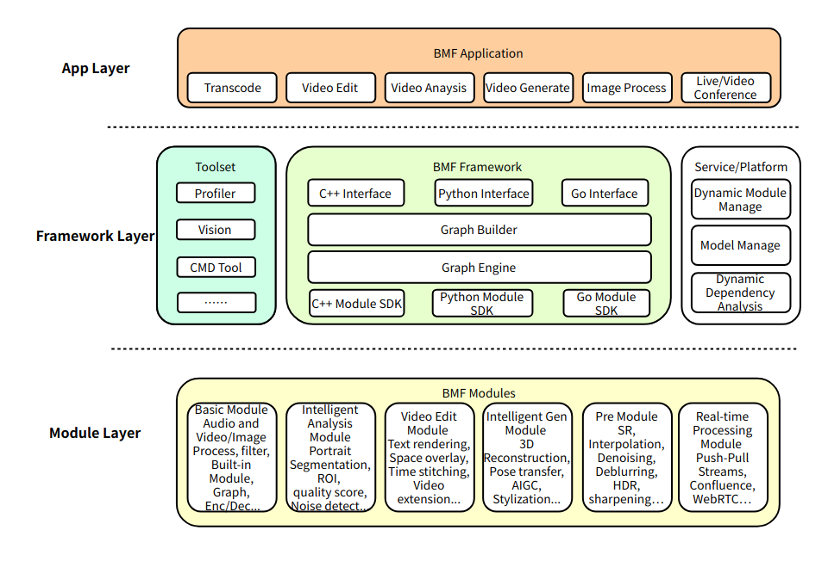



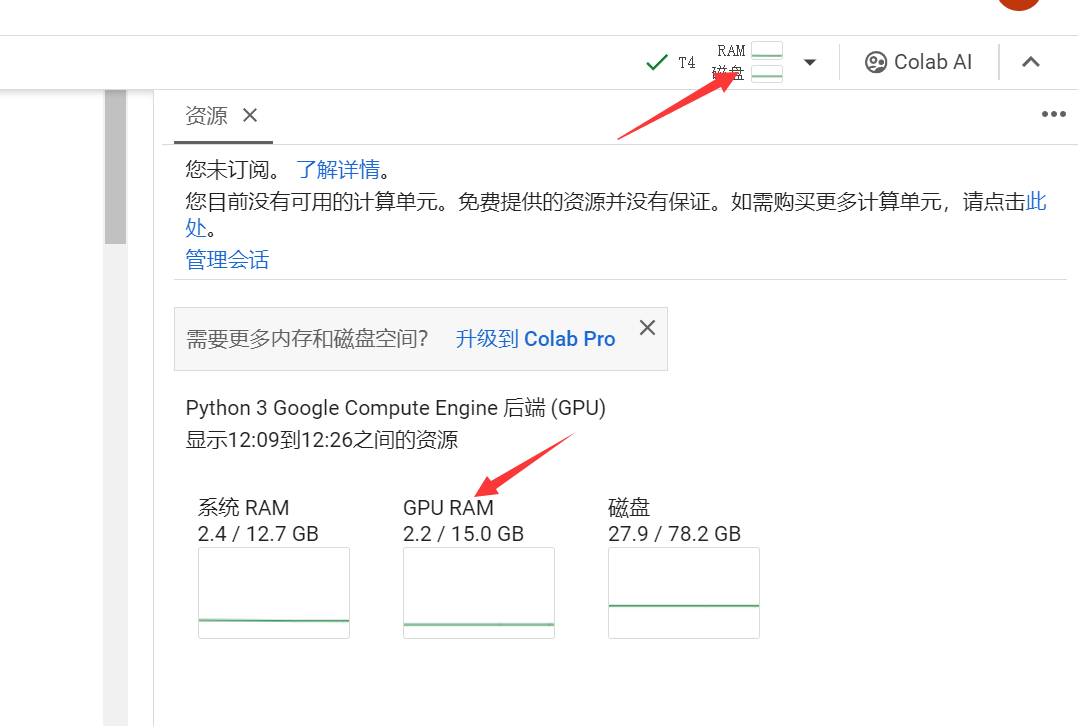
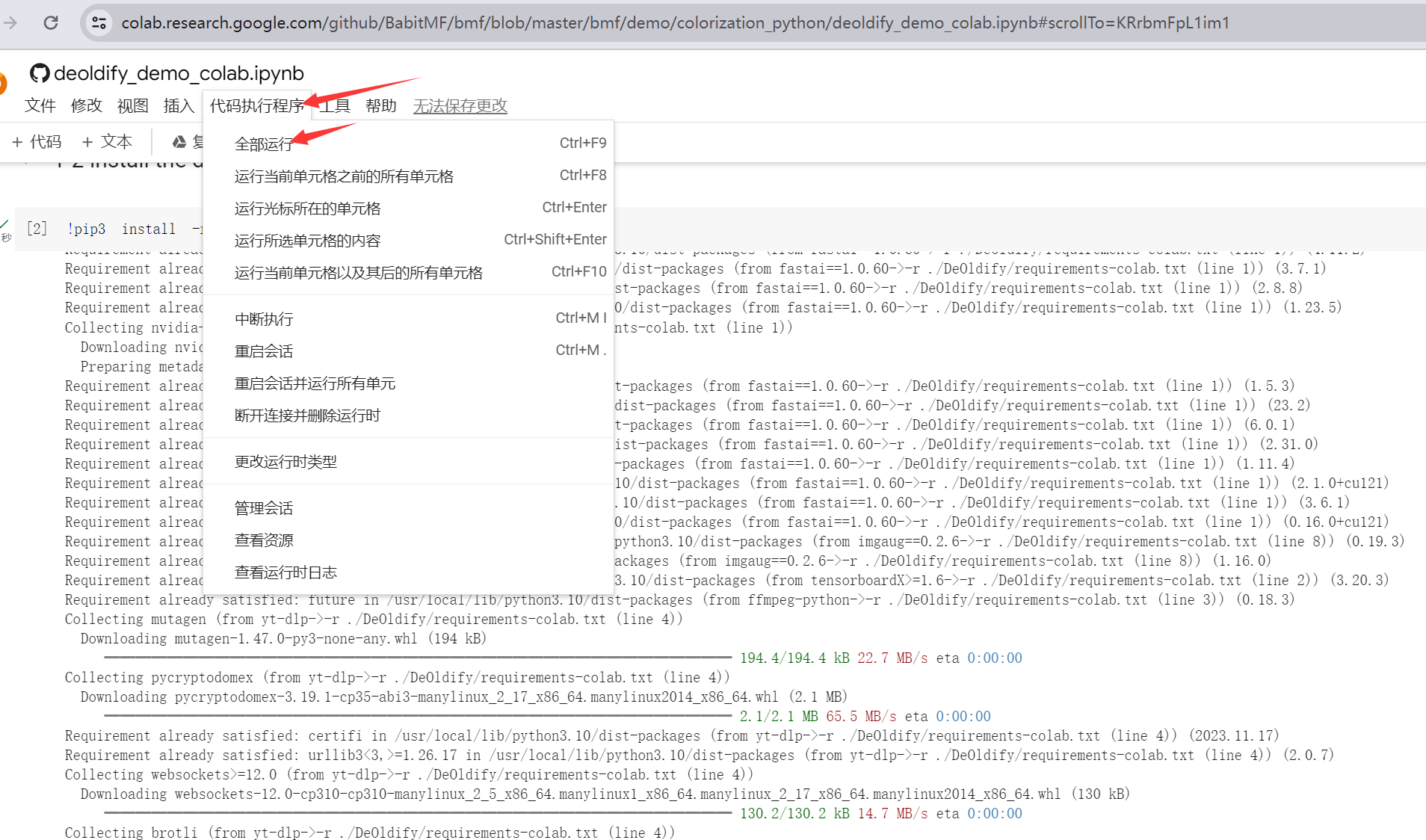
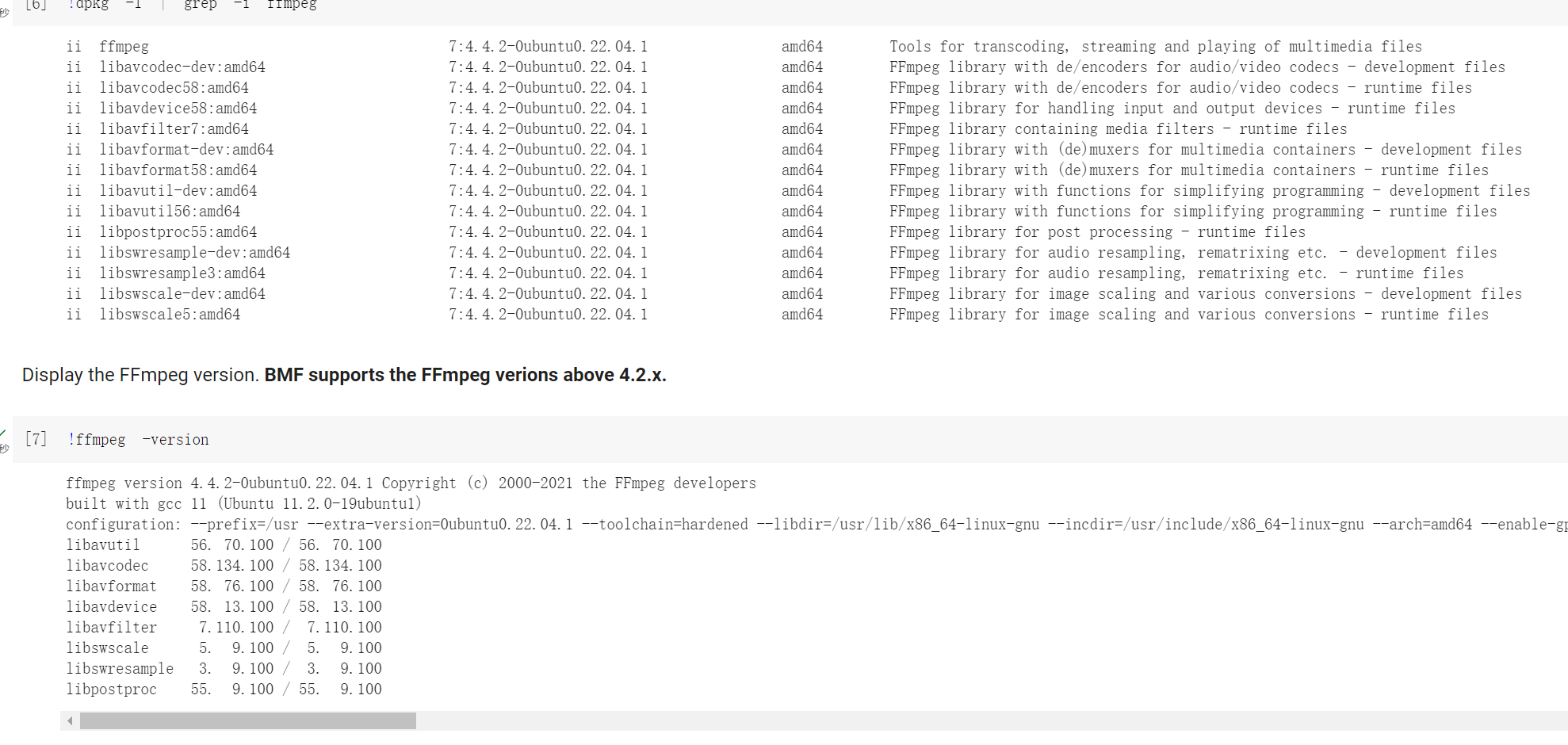

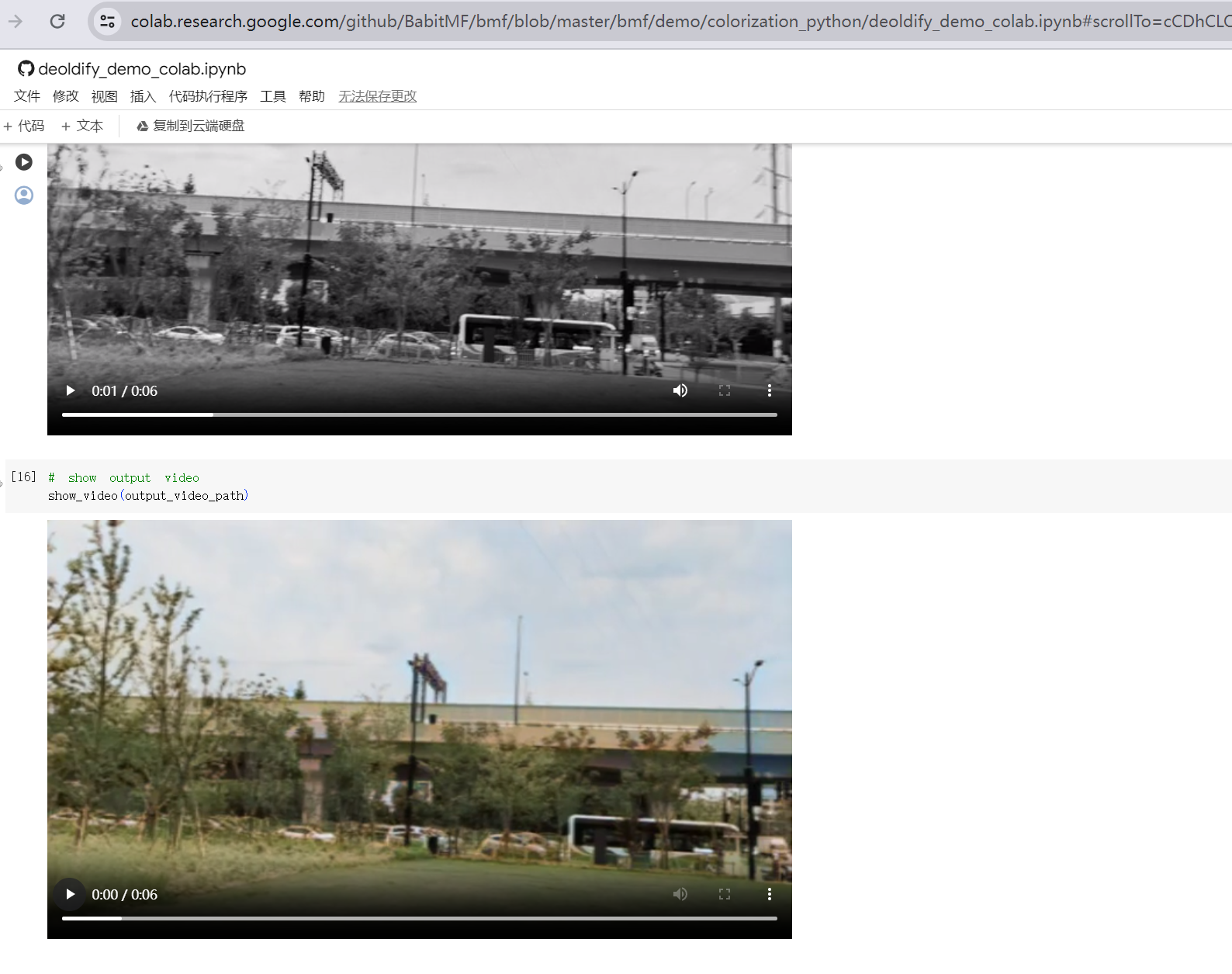











评论